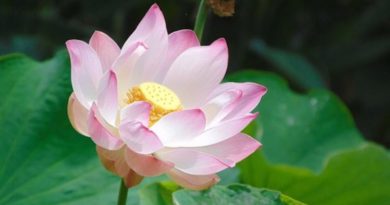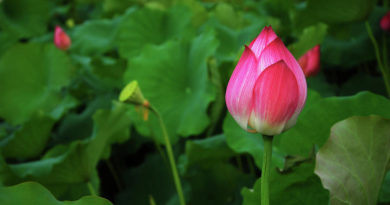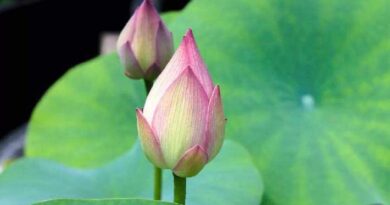DHAMMA PADETHA – 10. THREE WAYS OF NOTING VEDANA
DHAMMA PADETHA – THREE WAYS OF NOTING VEDANA
Nowadays, practising satipatthana vipassana has flourished. Every wise person practises satipatthana vipassana meditation. Those who do not have the opportunity to practise yet, try to find the correct method to do so.
When the practice of satipatthana vipassana meditation is done practically, aches, pain, fatigue which are unpleasant sensation (dukkha vedana) are experienced at the beginning. There is more or less some difference between one another. Later, they will experience peace which no ordinary people can experience.
Therefore, at the beginning of the practise, unpleasant sensations such as aches and pain, dizziness, itchiness, nausea, swaying, physical and mental suffering will be experienced according to the knowledge (nana). Then one will think that he had heard that those who practise Lord Buddha’s dhamma step by step become happy and gentle.
But in actual practice there are aches and pain, dizziness, itchiness, nausea and swaying so that the one becomes discouraged, thinking he cannot attain dhamma in this life and become discouraged. That is why every one who practises meditation should know the method of overcoming vedana.
There are three ways of noting the dukkha vedana which arises while practising vipassana meditation.
(1) meditating with the aim of making the unpleasant sensations disappear.
(2) meditating by establishing an aggressive state of mind with the intention of annihilating the unpleasant sensations.
(3) meditating to realize the intrinsic nature of the unpleasant sensations.
(1) When you meditate with the aim of making the unpleasant sensations disappear, it is because of your desire to be comfortable again, to be free from unpleasant sensations which is lobha. You meditate so as to be free from lobha. If you meditate with the aim of making unpleasant sensations disappear, lobha is involved. Because of this defilement you will be slow in gaining insight. That is why, you should not have the aim to make unpleasant sensations disappear. You should not adopt this method. You should avoid it.
(2) When you meditate by establishing an aggressive state of mind and resolve to annihilate the unpleasant sensations, and dosa is established. Because you have established an aggressive state of mind to make unpleasant sensations disappear the noting will contain anger, which is a defilement. Thus, you will be slow in the progress of gaining insight. Therefore, you should not adopt this method of establishing an aggressive state of mind, to annihilate the unpleasant sensations. You should avoid this method.
(3) You should adopt the method to contemplate and note so that you will realize the intrinsic nature of the unpleasant sensations.
When you are noting to realize the intrinsic nature of aches and pain you must be careful not to let your body and mind become tense when vedana arises. If you become tense there will be too much effort (viriya). It must be natural without being tense or lax, your noting mind must be focussed directly on the vedana.
When noting, you should not contemplate on the form of the body such as the foot, the hand, the knee, the buttock. Note just the intrinsic nature of pain penetratively. Only then you will realize the intrinsic nature of vedana.
When unpleasant sensations occur while meditating, note intently to know whether the pain is located on the flesh or on the skin, in the veins or through the bones so that you will realize the extent of the pain. You should note intently and mentally ‘paining, tingling, aching’. The second, third and later notings should be done in a similar manner, intently to know the extent of unpleasant sensations.
When your concentration power has developed to a certain extent, after noting four or five times intensively you will realize that the aches and pain increase. After it reaches its highest intensity it begins to lessen and after noting four or five times you will know that it eases step by step.
Because you are noting continuously your concentration power deepens and you will realize that as you note once the pain increases. When it decreases you note once and it cases. You will realize the nature of vedana.
Afterwards, as you continue noting, your concentration power strengthens and as you note ‘paining, paining’ once, the vedana arises and passes away. Yogis who are practising meditation will know for themselves.
Yogis, who are intelligent, will perceive that as they note ‘paining’ once, it disappears. Moreover, the consciousness that knows the pain also disappears. The noting mind which notes ‘paining’ also vanishes.
Those who experience the disappearance of the phenomena will perceive with their own intellect that vedana is impermanent, the noting mind is also impermanent, thus, characteristic of impermanence (Anicca Lakkhana) is known. The disappearance is so rapid that it oppresses you, that is the sign of suffering, thus, characteristic of suffering (Dukkha Lakkhana) is known. You cannot prevent the oppressive process of dissolution in any way, This process takes place of its own accord. There is absence of self or ego which is characteristic of no-self (Anatta Lakkhana).
In noting to realize the nature of vedana the yogis’ concentration (samadhi) power strengthens and sharpens and because they can note and perceive anicca, dukkha, anatta, they are nearing the noble dhamma which they have aspired for. As their five faculties (indriya) be come balanced they will attain noble dhamma, fruition and nibbana. That is why the method of noting to comprehend the intrinsic nature of vedana should be adopted.








